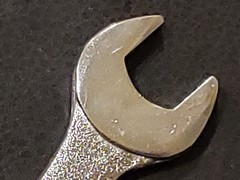 The struggle is real. The struggle against gravity, that is. Every day, we’re fighting the forces of gravity and their impact on our anatomy and physiology throughout the health continuum. Young and old, in sickness and in health, we are all attempting to adapt (or not) to the imposed demands of daily function - and working against gravity is of primary concern to live on planet earth successfully.
The struggle is real. The struggle against gravity, that is. Every day, we’re fighting the forces of gravity and their impact on our anatomy and physiology throughout the health continuum. Young and old, in sickness and in health, we are all attempting to adapt (or not) to the imposed demands of daily function - and working against gravity is of primary concern to live on planet earth successfully.
Mechanical loads come in a variety of presentations. We have tensile and compressive loads. We have directional and dimensional loads. We have pressure and volume. All of these mechanical loads serve as a stimulus for a specific physiological or anatomical response. The scientists call it “Wolff’s Law” and the “SAID Principle” (Specific Adaptation to Imposed Demands). I call it “Form Follows Function”.
Whether we realize it or not, exercise regimes are simply a series of mechanical loading strategies. When you get down to basics, an exercise is simply a stimulus to evoke a specific response. We can manipulate the variables of mechanical loading to attain the desired response. Hopefully, you know the response you desire and the critical parameters necessary to make it happen optimally. More often than not, however, exercise is far too arbitrary or anecdotal, missing the true mechanisms of stimulus and response at the cellular level.
However, mechanical loading is not just the intervention, but the diagnostic tool as well. When you examine this from a broader perspective, the goal is to understand the effects of mechanical loading to assess the status of various bodily systems. For example, the musculoskeletal system is impacted by mechanical loads such as compression, tension, and shear. The cardiovascular system is impacted by mechanical loads such as pressure and volume. In fact, I would suggest that most (if not all) of our bodily systems are impacted by some degree of mechanical loading.
If we understand the responses to mechanical loading combined with concordant symptoms, then we can understand the behavior of the system and devise an appropriate plan to increase or alter the individual’s capacity to tolerate mechanical loading - and improve our ability to function.
Many physical therapists assess the response to many of these variables in their assessment process but in a haphazard or piecemeal fashion. There is also a growing trend amongst physical therapists to move away from a biomechanical model and toward a biopsychosocial one, a trend that I think has missed the mark of its original intent. I would propose that what we really need to be discussing in the health care world is the evolution of diagnostics and assessment in a similar fashion to the evolution of Newtonian mechanics to quantum mechanics. This would involve the blending and interaction of mechanical and cognitive loading and our ability to recover from and adapt to these loading strategies - a concept that I published in “RunSmart: A Comprehensive Approach to Injury-Free Running” back in 2008. The understanding of the behavior of the dynamical system serves as a paradigm under which we view the world. However, that’s another digression for a later date.
The reality of where we stand now is that as long as we are fighting gravity, we have to understand the impact of mechanical loads on our ability to function on planet earth. To do so, mechanical loading may in fact serve as the ultimate diagnostic tool, a tool that has been sitting right there in front of us in full view and that we have simply failed to fully acknowledge in its scope and meaning.
Photo credits: Allan Besselink
 "Running Injuries: Etiology And Recovery- Based Treatment" (co-author Bridget Clark, PT) appears in the third edition and fourth editions of "Clinical Orthopaedic Rehabilitation: A Team Approach" by Charles Giangarra, MD and Robert C. Manske, PT.
"Running Injuries: Etiology And Recovery- Based Treatment" (co-author Bridget Clark, PT) appears in the third edition and fourth editions of "Clinical Orthopaedic Rehabilitation: A Team Approach" by Charles Giangarra, MD and Robert C. Manske, PT.
 Allan Besselink, PT, DPT, Ph.D., Dip.MDT has a unique voice in the world of sports, education, and health care. Read more about Allan here.
Allan Besselink, PT, DPT, Ph.D., Dip.MDT has a unique voice in the world of sports, education, and health care. Read more about Allan here.
 Top 5 finalist in three categories: "Best Overall Blog", "Best PT Blog" and "Best Advocacy Blog".
Top 5 finalist in three categories: "Best Overall Blog", "Best PT Blog" and "Best Advocacy Blog".